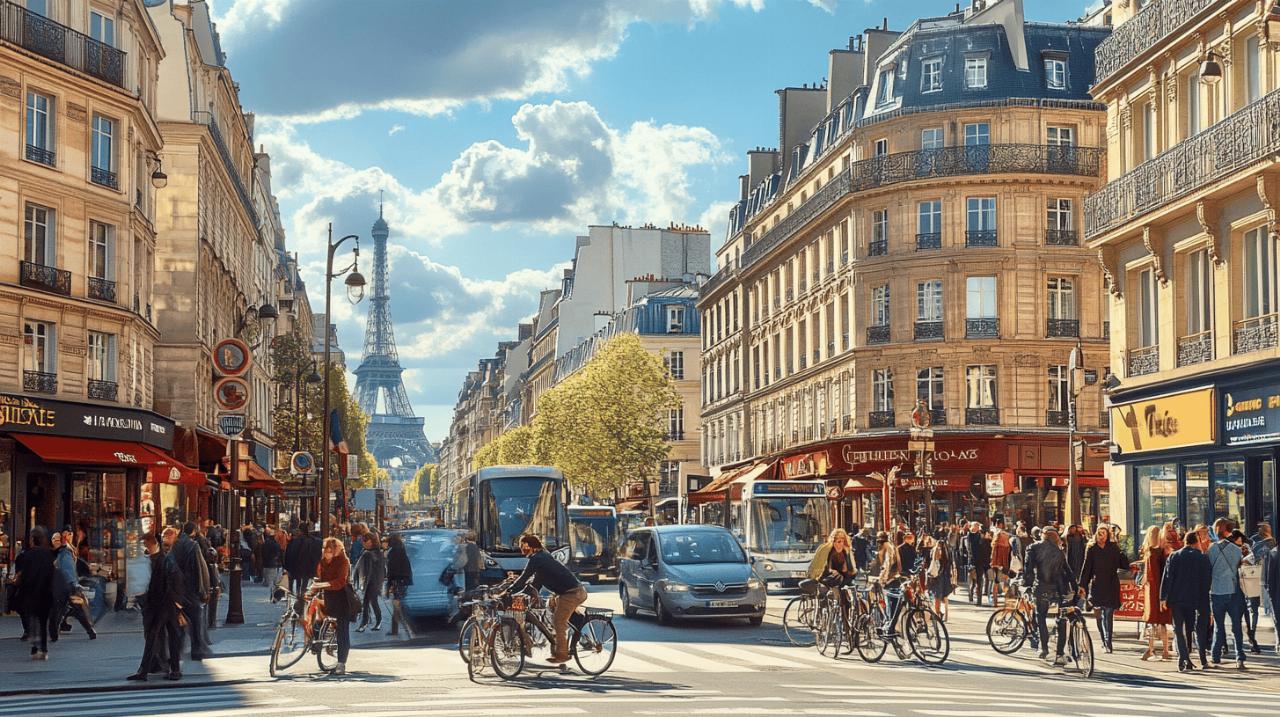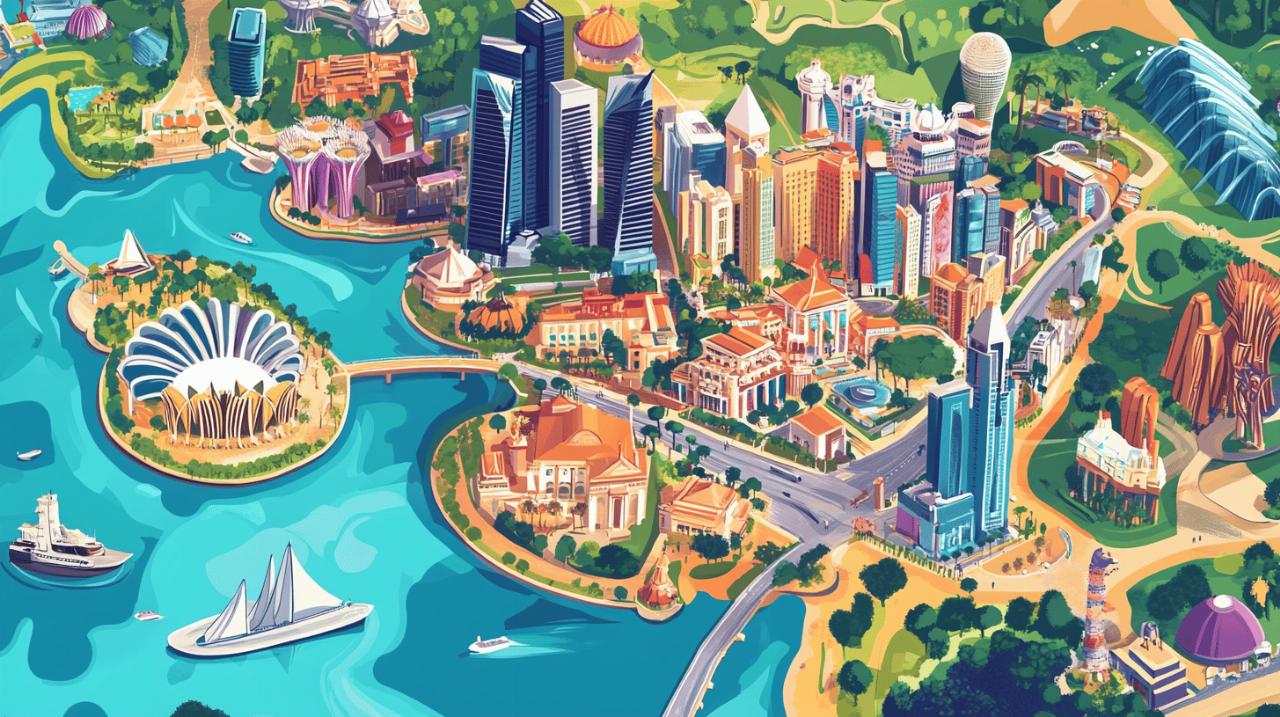Planning a trip to the French capital can be an exhilarating prospect, but navigating the bustling streets and diverse districts requires a bit of forethought. Paris, with its twenty arrondissements sprawling across the cityscape, presents both opportunities and challenges for visitors eager to soak up its art, fashion, and unparalleled cultural offerings. The key to a successful visit lies in mastering your journey calculations, ensuring you spend more time marvelling at the Eiffel Tower or wandering through Le Marais than fretting about delays or transport confusion. By leveraging modern journey planning tools, you can transform what might otherwise be a stressful logistical puzzle into a seamless, enjoyable adventure.
Understanding mappy's core features for parisian navigation
Mappy stands out as a comprehensive French alternative to other mapping applications, offering a tailored approach to journey planning across Paris and beyond. This platform provides an array of tools designed to help both residents and visitors calculate travel times with remarkable accuracy. By integrating real-time data, Mappy ensures that your estimates reflect current conditions rather than theoretical scenarios. Whether you're heading to the Louvre Museum or exploring the charming streets of Montmartre, this application helps you anticipate delays, plan efficient routes, and make informed decisions about your mode of transport.
Journey planning tools: from real-time traffic to fuel price estimates
One of the most valuable aspects of Mappy is its ability to factor in real-time traffic conditions when calculating journey durations. For those who prefer driving, this functionality means you can avoid unexpected hold-ups and plan your departure accordingly. The application goes a step further by estimating fuel prices, a particularly useful feature given the fluctuating costs of petrol and diesel. This ensures that budget-conscious travellers can factor in the financial implications of their journey alongside the time commitment. Beyond simply plotting a route, Mappy provides a holistic view of your travel experience, allowing you to weigh up different options before setting off. The platform also offers alerts, keeping you informed of any disruptions or changes that might affect your plans. This level of detail transforms a simple mapping service into a reliable travel companion, one that adapts to the dynamic nature of city life.
Comparing transport options: car, bicycle, and public transport lines
Mappy excels in its ability to present multiple transport options, making it easier to choose the most suitable means of getting around. For cyclists, the application highlights dedicated cycle paths, ensuring a safer and more enjoyable ride through the capital. This is particularly valuable in a city where cycling is increasingly popular but navigating busy roads can be daunting. If you prefer public transport, Mappy provides comprehensive information on bus and metro lines, helping you understand which connections are most efficient for your itinerary. The application allows you to compare these options side by side, weighing factors such as travel time, convenience, and cost. This comparative functionality is especially useful when planning multi-stop itineraries, as it enables you to identify the most efficient combination of transport methods. By offering such a diverse range of options, Mappy caters to the varied preferences and needs of travellers, whether you're a local commuter or a first-time visitor eager to explore iconic landmarks like the Arc de Triomphe or the Palace of Versailles.
Maximising efficiency across paris's twenty arrondissements
Paris is divided into twenty arrondissements, each with its own distinct character and array of attractions. Understanding how to navigate between these districts is crucial for anyone looking to experience the city comprehensively without wasting precious hours on poorly planned routes. By accurately calculating journey times, you can structure your itinerary to maximise your sightseeing potential, ensuring that you visit as many highlights as possible while still allowing for spontaneous detours and leisurely pauses. The key is to use journey planning tools to anticipate travel durations, taking into account factors such as the time of day, the mode of transport, and any potential disruptions that might arise.
Navigating Iconic Districts: From the Eiffel Tower to Saint-Germain-des-Prés
The Eiffel Tower, standing tall with its wrought-iron elegance, is often the first stop for visitors to Paris. However, moving from this iconic structure to other must-see locations such as the Musée d'Orsay or the historic neighbourhood of Saint-Germain-des-Prés requires careful planning. Each arrondissement offers its own treasures, from the artistic haven of Montmartre to the vibrant shopping districts around the Champs-Élysées. By using a journey planner, you can estimate how long it will take to move between these areas, whether you're travelling by metro, on foot, or by bicycle. This foresight allows you to group nearby attractions together, reducing unnecessary backtracking and ensuring that your daily schedule is both ambitious and achievable. For instance, pairing a visit to the Louvre Museum with a stroll through the Tuileries Gardens and a stop at Place de la Concorde creates a logical, geographically coherent route that minimises wasted time.
Practical tips for calculating accurate journey times within specific arrondissements
When planning your day, it's important to remember that journey times can vary significantly depending on the time of day and the specific arrondissement you're navigating. Morning rush hours, for example, can add considerable time to journeys by public transport or car, while cycling may offer a more predictable alternative. To calculate accurate journey times, start by inputting your starting point and destination into a journey planning tool, then review the suggested routes and compare the estimated durations for different transport modes. Consider factors such as whether you'll need to change metro lines, the distance you'll need to walk between stations, and whether there are any reported service disruptions. For those exploring areas like the Latin Quarter or the Temple neighbourhood, understanding the local geography and transport links can make a substantial difference. Additionally, booking tickets in advance for popular attractions such as the Sainte-Chapelle or the Pantheon can save you time waiting in queues, allowing you to stick more closely to your planned schedule.
Cycling and Driving Routes: Making the Most of Mappy's Specialised Functionality
 For those who prefer a more active or independent mode of transport, cycling and driving offer distinct advantages when exploring Paris. Mappy's specialised functionality caters to both groups, providing tailored information that helps you navigate the city safely and efficiently. Whether you're drawn to the freedom of the open road or the eco-friendly appeal of a bicycle, understanding how to make the most of these options can significantly enhance your travel experience.
For those who prefer a more active or independent mode of transport, cycling and driving offer distinct advantages when exploring Paris. Mappy's specialised functionality caters to both groups, providing tailored information that helps you navigate the city safely and efficiently. Whether you're drawn to the freedom of the open road or the eco-friendly appeal of a bicycle, understanding how to make the most of these options can significantly enhance your travel experience.
Discovering safe cycle paths throughout the capital
Cycling in Paris has become increasingly popular in recent years, with the city investing in dedicated cycle paths and infrastructure to support this growing trend. Mappy helps cyclists identify the safest and most convenient routes, highlighting cycle paths that allow you to avoid busy roads and enjoy a more pleasant ride. This is particularly valuable for visitors who may be unfamiliar with the city's layout and prefer to avoid the stress of navigating heavy traffic. By following these recommended routes, you can explore neighbourhoods such as Oberkampf or South Pigalle at a leisurely pace, taking in the vibrant street life and stopping at charming cafes or boutiques along the way. The application's focus on safety ensures that even less experienced cyclists can confidently explore the capital, making cycling a viable option for families or those who simply want to enjoy the city from a different perspective.
Real-Time Driving Conditions and Route Optimisation for Motorists
For motorists, Mappy's real-time traffic updates are invaluable, providing up-to-the-minute information on congestion, road closures, and other potential disruptions. This functionality allows you to adjust your route on the fly, avoiding areas where traffic is particularly heavy and ensuring that you reach your destination as quickly as possible. The application also suggests alternative routes, helping you weigh up the trade-offs between distance, estimated travel time, and road conditions. For those planning day trips to destinations such as the Palace of Fontainebleau or embarking on road trips to cities like London or Amsterdam, these features are especially useful, as they help you plan for longer journeys and anticipate any challenges you might encounter along the way. By optimising your route based on real-time data, Mappy transforms what could be a frustrating drive into a smooth, efficient journey.
Public transport mastery: bus and metro lines made simple
Public transport remains one of the most efficient ways to navigate Paris, offering extensive coverage across all arrondissements and providing a cost-effective alternative to taxis or private vehicles. Understanding how to use the bus and metro networks effectively can significantly enhance your experience, allowing you to move quickly between attractions and explore areas that might otherwise feel out of reach. Mappy simplifies this process, offering detailed information on routes, schedules, and connections that help you plan your journeys with confidence.
Alerts and updates: staying informed about service changes
One of the most frustrating aspects of relying on public transport is the potential for unexpected disruptions, whether due to engineering works, strikes, or other unforeseen events. Mappy addresses this concern by providing alerts and updates, ensuring that you're always informed about any changes that might affect your journey. This proactive approach allows you to adjust your plans in advance, choosing alternative routes or modes of transport if necessary. For visitors who may not be familiar with the local transport network, these alerts are particularly valuable, offering peace of mind and helping to avoid the stress of arriving at a station only to discover that your intended line is out of service. By staying informed, you can maintain a flexible itinerary that adapts to changing circumstances, ensuring that your trip remains as smooth and enjoyable as possible.
Planning multi-stop itineraries for comprehensive sightseeing
For those looking to pack as much as possible into their visit, planning multi-stop itineraries is essential. Mappy's functionality makes it easy to map out a day that includes visits to multiple attractions, whether you're combining a morning at the Musée de l'Orangerie with an afternoon exploring the hidden passages near the Opera or linking a trip to the Catacombs with a stroll through the Luxembourg Gardens. By inputting each stop into the application, you can see the estimated travel times between locations and identify the most efficient routes. This level of planning ensures that you make the most of your time, reducing the likelihood of arriving at a museum only to find that it's about to close or missing a crucial connection that would have saved you precious minutes. For first-time visitors, this approach is particularly beneficial, as it provides a structured framework within which to explore the city while still allowing for spontaneity and discovery. Whether you're aiming to tick off the must-see sights like Notre-Dame Cathedral and the Basilique du Sacré-Cœur or seeking out hidden gems in neighbourhoods like the 10th Arrondissement or Bastille, accurate journey planning is the key to a successful, stress-free experience in the City of Lights.






